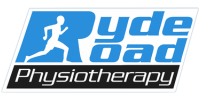The pelvic floor is a group of muscles that sit deep within the pelvis running from the pubic bone at the front, wrapping around your bladder, vagina and bowel then connecting to your tailbone. There is always a certain level of subconscious activation in the muscles called ‘ resting tone’; this helps with postural control and core activation as well as maintaining continence during low-level activity.
The muscles also have an ability to increase strength during higher load activities such as during lifting, sneezing and running, or when you have a strong urge to go to the toilet. If the muscles are unable to increase the strength when needed then symptoms such as urinary incontinence, bowel incontinence and prolapse often commence
The pelvic floor also plays an important role in sexual function as it must be able to relax to allow penetration, then contract for sensation and orgasm.
The effect of pregnancy, delivery and the postnatal period
Pregnancy is often the first time the pelvic floor has really been challenged and as a result many women start to get the first signs of weakening such as leaking during a sneeze. The reported prevalence of urinary incontinence during pregnancy during is 40 – 59%, with highest rates in the third trimester. The main reasons for weakening in pregnancy is 2 fold:
1. There is an average weight gain of 12 – 18 kg, which dramatically increases the loading through the pelvic floor and bladder.
2. There is a natural softening of the pelvic floor muscles due to hormonal changes throughout the pregnancy, this softening occurs to minimise obstruction to the pelvic outlet during birth.
Despite the type of delivery a woman goes on to have, whether it is a vaginal delivery or a caesarean, there will still be a degree of pelvic floor weakening due to the changes occurring during pregnancy. It is without doubt however that a vaginal delivery places much more stress on the pelvic floor muscles. In particular those women that have had a baby over 4kg, had an assisted delivery with forceps or ventouse or have pushed for greater than 2 hours need to prioritise have a greater strain to their pelvic floor and need to be proactive in the postnatal period.
In the postnatal period, the pelvic floor starts to recover from the pressure of the birth, the healing of stitches and from the hormonal effects of pregnancy. There is however a new load put on the pelvic floor, which comes in the form of constantly lifting a newborn baby (and in may cases a jealous toddler as well!). As the baby gets heavier, so do the loads and learning how to activate your pelvic floor during lifting plays a crucial component in minimising further pelvic floor weakening.
So what can you do?
The truth is, many of these effects during the childbearing years are unavoidable, so don’t be too hard on yourself. There is however a few things you can do to minimise any ongoing effects on the pelvic floor:
– Avoid becoming constipated, as this strains the pelvic floor. Increase your water intake and ensure you are getting large amounts of soluble fibre such as from porridge, dried fruits, and psyllium husks. In some cases a supplement may be needed, which you should speak to your pharmacist about.
– When opening your bowels, take a tip from the males and take your time! Lean forward, place your elbows on your knees and rise up on your tippy toes. This position helps to open up your bowel with the least amount of pressure on the pelvic floor. Be sure not to hold you breath or push, or rush as an extra minute on the toilet can make a difference to your pelvic floor in the long run.
– Minimise heavy lifting and if you do weights at the gym, sit on a fit ball do arm weights, and ensure you are not holding your breath.
– Learn to activate your pelvic floor during increased loads such as with a sneeze, cough or lifting.
Of course however the most important thing, is to do regular pelvic floor exercises. For those of you that feel confused on how to do them correctly I would highly recommend you see a qualified health professional such as a Woman’s Health Physiotherapist or your Gynaecologist to teach you the correct technique.
For those of you how have been taught correctly how to do the exercises, try and make them apart of your daily routine such as during your normal exercise routine, whilst rocking the pram back and forward or whilst breastfeeding.
Pelvic floor exercises really do play a crucial role in prevention as well as treatment of symptoms such as incontinence, prolpase and sexual dissatisfaction. and are most important during the childbearing years. So stop procrastinating, learn how to do them and then add them straight into your daily routine (not on to your to do list!)
Stacey
